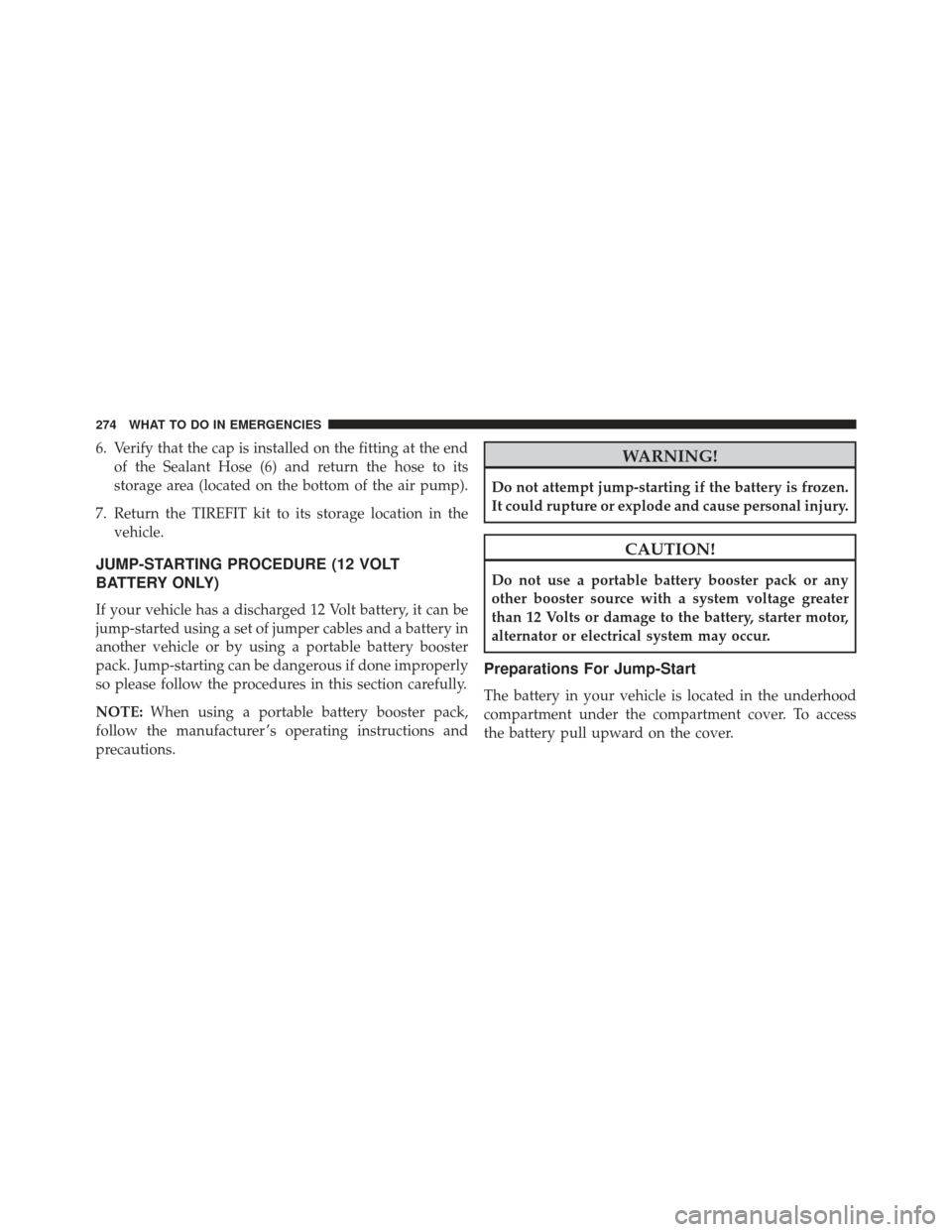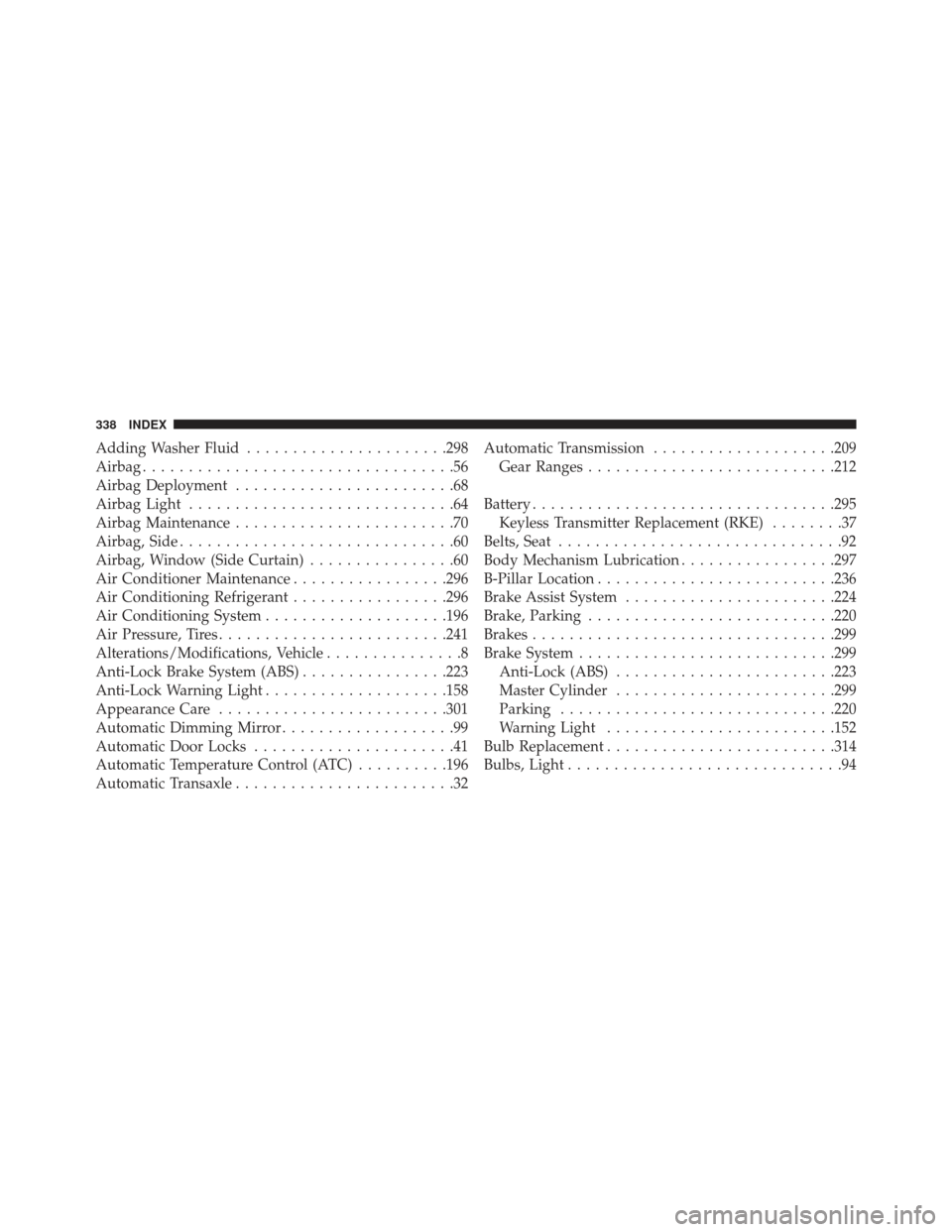Page 23 of 350
•The battery’s current state of charge (percent depleted)
•
What recharging device is being used (Level 1 or Level 2)
• Ambient temperatures
Type of Charge Estimated Charge Time
Level 1 (120V/15A) Approximately 23 hours
Level 2 (240V/30A) Approximately 4 hours
NOTE:
• Charging times are estimates based on a completely
discharged high voltage battery pack.
• Charging times will vary based on the age, condition,
state of charge and temperature of the high voltage
battery pack.
Vehicle Charging Cord
Your vehicle comes equipped with a standard AC 120V
NEMA 5-15 Electric Vehicle Supply Equipment (EVSE)
also referred to as a charge cord. The EVSE is used to charge the high voltage battery and
plugs into any standard AC grounded outlet. To access
the charge cord, lift the rear cargo cover and remove the
charging cord from the storage bin.
NOTE:
The EVSE charge cord is used for Level 1
charging only.EVSE Location
2
THINGS TO KNOW BEFORE STARTING YOUR VEHICLE 21
Page 27 of 350
Charging The High Voltage Battery
1. Put the vehicle in PARK.
2. Turn the ignition to the OFF position.
3. Remove the Level 1 EVSE from its storage bin bylifting the rear cargo cover. 4. Uncoil the entire length of the EVSE (charge cord).
5. Plug the EVSE into a standard 120V AC outlet that is
properly grounded. It is recommended that the EVSE
is connected to an AC outlet on a circuit which is not
electrically loaded by other devices. Extension cords
may not be used.
NOTE: All of the EVSE LED’s illuminate green.
6. Open the charge receptacle door.
NOTE: The charge receptacle door is locked whenever
the vehicle is locked. Unlock the doors to unlock the
charge receptacle door for charging.
EVSE Location
2
THINGS TO KNOW BEFORE STARTING YOUR VEHICLE 25
Page 40 of 350
The recommended replacement battery is CR2032.
1. Press the mechanical key release button and releasethe mechanical key to access the battery case screw
located on the side of the Key Fob. 2. Rotate the screw located on the side of the Key Fob
using a small screwdriver.
Mechanical Key Release Button
Key Fob Screw Location
38 THINGS TO KNOW BEFORE STARTING YOUR VEHICLE
Page 66 of 350

hand, depending on the type and location of impact,
Advanced Front Air Bags may deploy in crashes with
little vehicle front-end damage but that produce a severe
initial deceleration.
The side air bags will not deploy in all side collisions.
Side air bag deployment will depend on the severity and
type of collision.
Because air bag sensors measure vehicle deceleration
over time, vehicle speed and damage by themselves are
not good indicators of whether or not an air bag should
have deployed.
Seat belts are necessary for your protection in all colli-
sions, and also are needed to help keep you in position,
away from an inflating air bag.
The ORC monitors the readiness of the electronic parts of
the air bag system whenever the ignition switch is in theON/RUN or START position. If the key is in the OFF/
LOCK position, or not in the ignition, the air bag system
is not on and the air bags will not inflate.
The ORC contains a backup power supply system that
may deploy the air bags even if the battery loses power or
it becomes disconnected prior to deployment.
Also, the ORC turns on the Air Bag Warning
Light in the instrument panel for approxi-
mately four to eight seconds for a self-check
when the ignition is first turned on. After the
self-check, the Air Bag Warning Light will turn off. If the
ORC detects a malfunction in any part of the system, it
turns on the Air Bag Warning Light, either momentarily
or continuously. A single chime will sound if the light
comes on again after initial startup.
It also includes diagnostics that will illuminate the instru-
ment cluster Air Bag Warning Light if a malfunction is
64 THINGS TO KNOW BEFORE STARTING YOUR VEHICLE
Page 276 of 350

6. Verify that the cap is installed on the fitting at the endof the Sealant Hose (6) and return the hose to its
storage area (located on the bottom of the air pump).
7. Return the TIREFIT kit to its storage location in the vehicle.
JUMP-STARTING PROCEDURE (12 VOLT
BATTERY ONLY)
If your vehicle has a discharged 12 Volt battery, it can be
jump-started using a set of jumper cables and a battery in
another vehicle or by using a portable battery booster
pack. Jump-starting can be dangerous if done improperly
so please follow the procedures in this section carefully.
NOTE: When using a portable battery booster pack,
follow the manufacturer ’s operating instructions and
precautions.
WARNING!
Do not attempt jump-starting if the battery is frozen.
It could rupture or explode and cause personal injury.
CAUTION!
Do not use a portable battery booster pack or any
other booster source with a system voltage greater
than 12 Volts or damage to the battery, starter motor,
alternator or electrical system may occur.
Preparations For Jump-Start
The battery in your vehicle is located in the underhood
compartment under the compartment cover. To access
the battery pull upward on the cover.
274 WHAT TO DO IN EMERGENCIES
Page 340 of 350

Adding Washer Fluid..................... .298
Airbag ..................................56
Airbag Deployment ........................68
Airbag Light .............................64
Airbag Maintenance ........................70
Airbag, Side ..............................60
Airbag, Window (Side Curtain) ................60
Air Conditioner Maintenance .................296
Air Conditioning Refrigerant .................296
Air Conditioning System ....................196
Air Pressure, Tires ........................ .241
Alterations/Modifications, Vehicle ...............8
Anti-Lock Brake System (ABS) ................223
Anti-Lock Warning Light ....................158
Appearance Care ........................ .301
Automatic Dimming Mirror ...................99
Automatic Door Locks ......................41
Automatic Temperature Control (ATC) ..........196
Automatic Transaxle ........................32 Automatic Transmission
....................209
Gear Ranges .......................... .212
Battery ................................ .295
Keyless Transmitter Replacement (RKE) ........37
Belts, Seat ...............................92
Body Mechanism Lubrication .................297
B-Pillar Location ......................... .236
Brake Assist System ...................... .224
Brake, Parking .......................... .220
Brakes ................................ .299
Brake System ........................... .299
Anti-Lock (ABS) ....................... .223
Master Cylinder ....................... .299
Parking ............................. .220
Warning Light ........................ .152
Bulb Replacement ........................ .314
Bulbs, Light ..............................94
338 INDEX